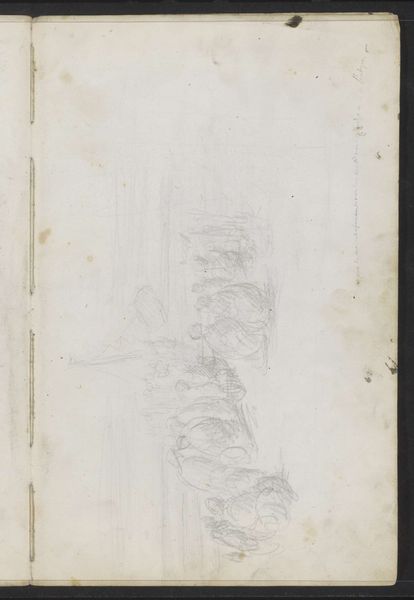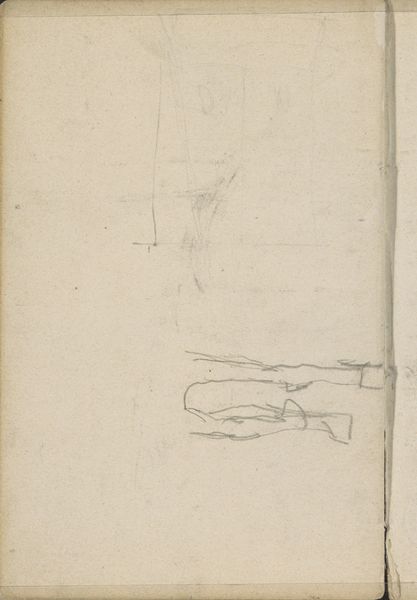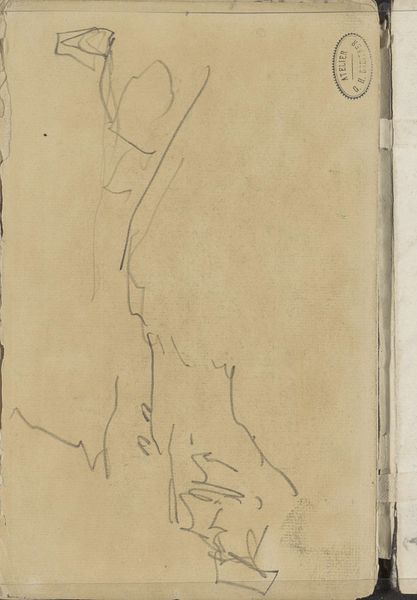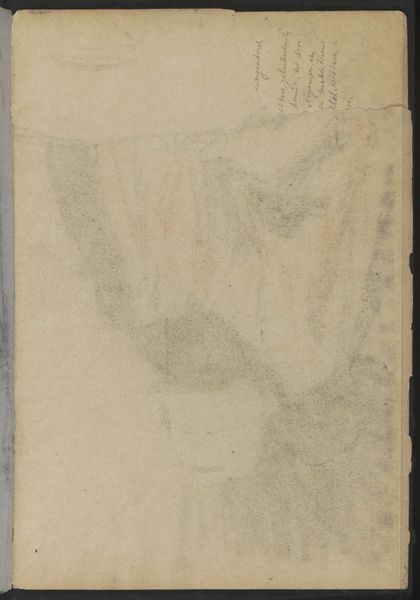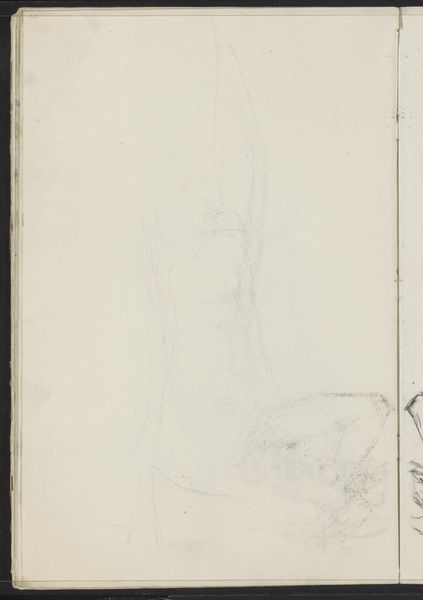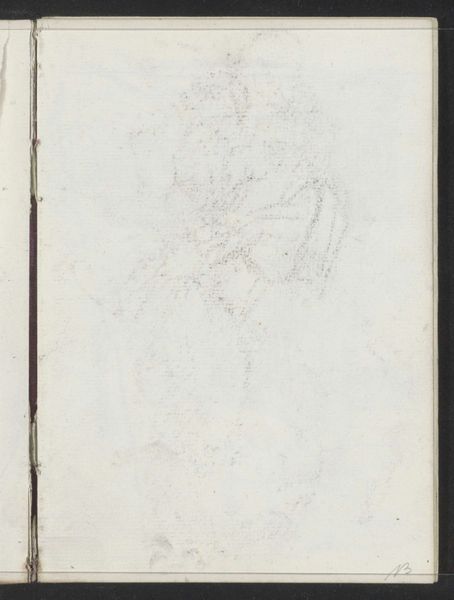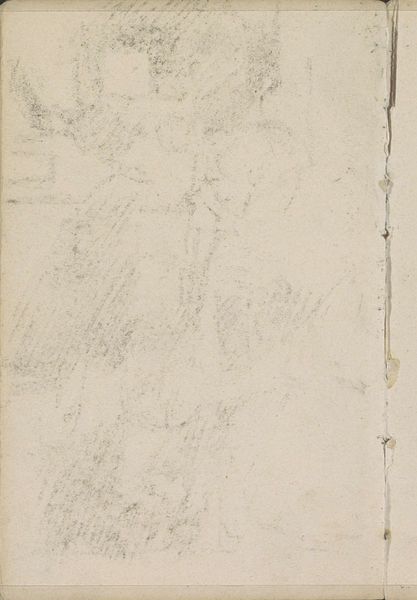
Copyright: Rijks Museum: Open Domain
Editor: Isaac Israels' "Standing Figure," done sometime between 1886 and 1934, is a pencil drawing on paper, currently at the Rijksmuseum. It feels almost ghostly, this faint outline of a person. What do you see in this piece? Curator: Beyond the Impressionistic sketch, I see the cultural memory embedded within figuration itself. What does it mean to depict a body, any body? This figure, barely there, evokes vulnerability. Israels leaves so much unsaid, yet the mere suggestion of human form carries immense weight. Editor: Weight? You mean like, the history of portraiture or something? Curator: Exactly. We bring centuries of understanding about how we represent ourselves. But notice what’s absent. Specificity, identity... Instead, it offers an impression. An ephemeral, here-today-gone-tomorrow figure that reminds me of societal anxieties around identity in transient, ever-modernising cities. Editor: So the vagueness is part of the point? Curator: I believe so. Consider the potential interpretations a defined form might have elicited then, versus now. But Israels presents it as almost an idea of a figure, and in doing so opens an infinite space for a viewer to engage in a deep exploration of self in relation to culture. What does this figure trigger within you? Editor: It does feel… unfinished. Now I see it less as a portrait and more as…a feeling. A moment caught and released. Curator: Precisely! It’s about visual and emotional suggestion, and the cultural context informs it all. Editor: That's so insightful. I'm going to think about that "weight" of images a lot more.
Comments
No comments
Be the first to comment and join the conversation on the ultimate creative platform.
